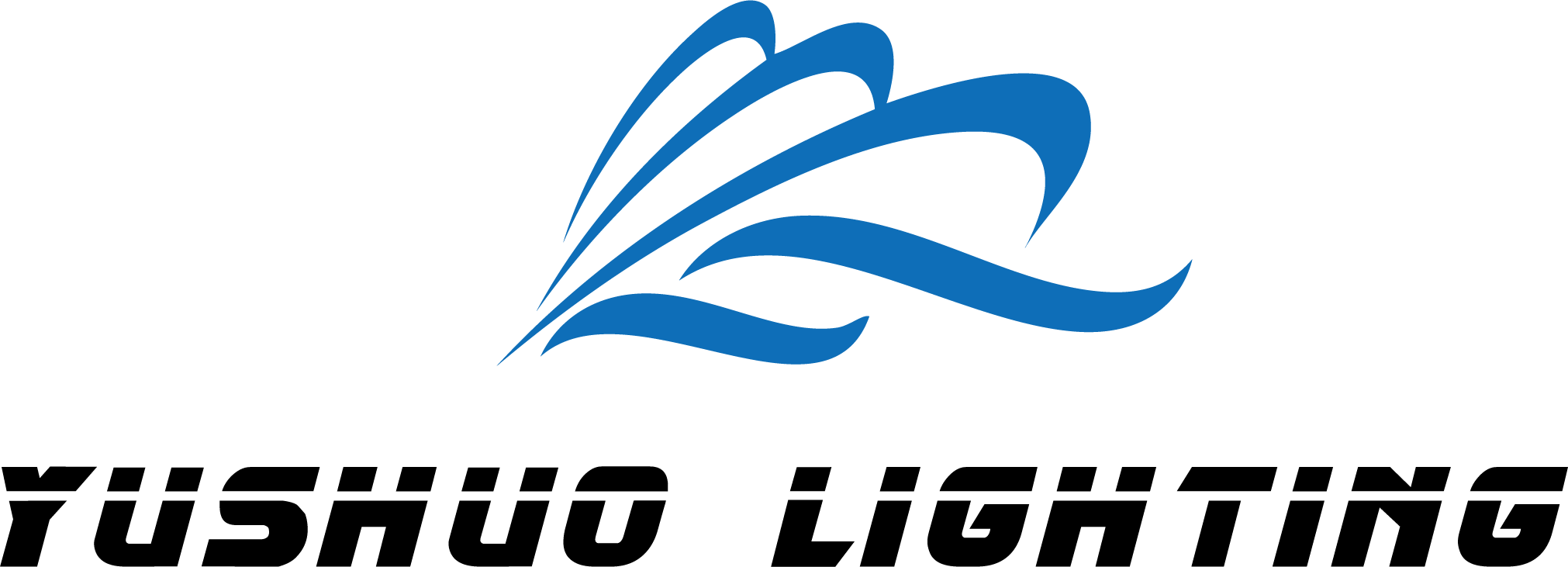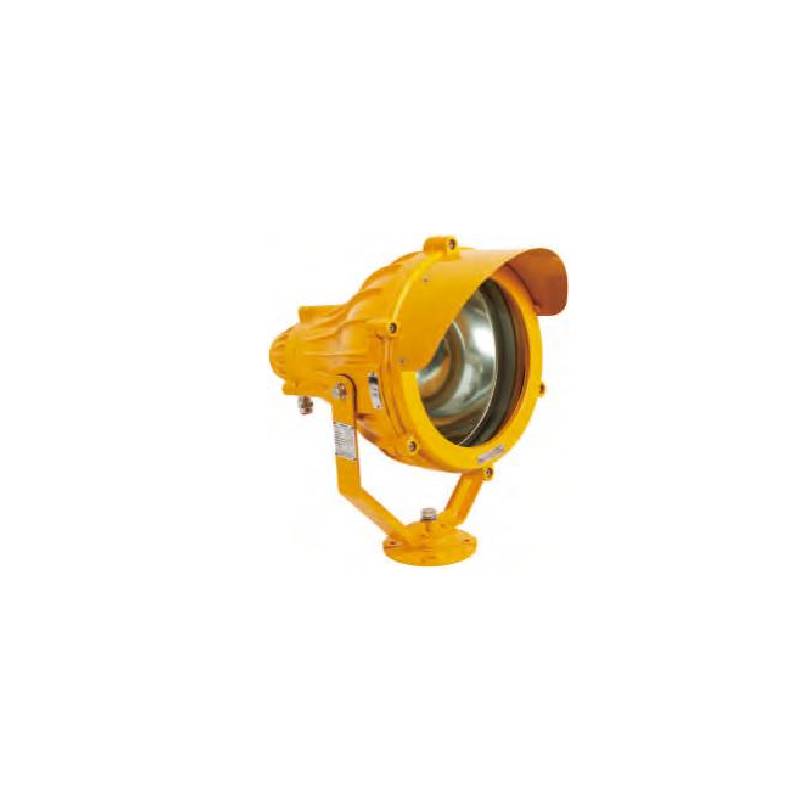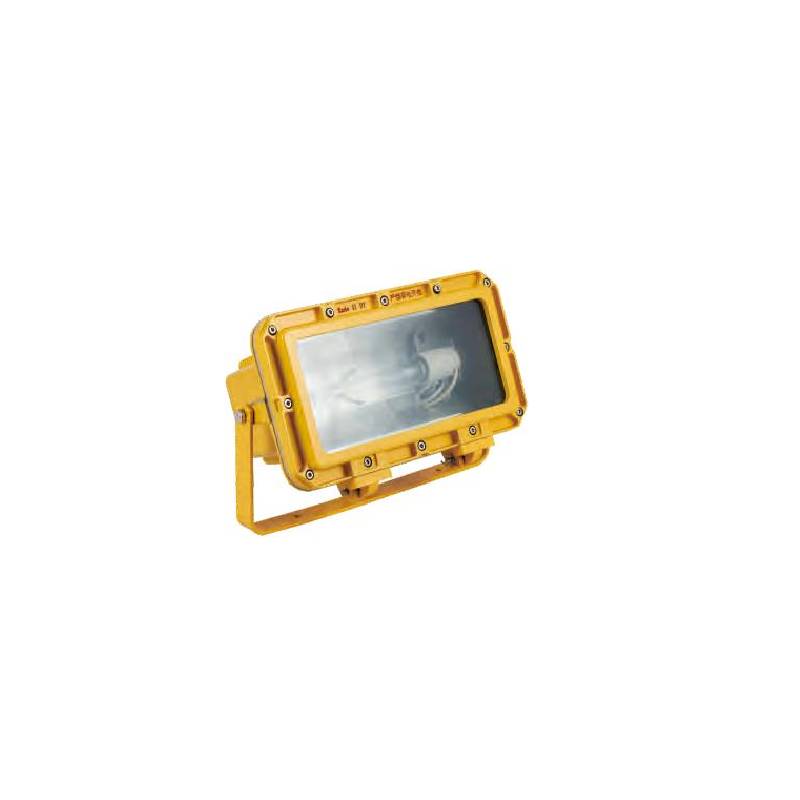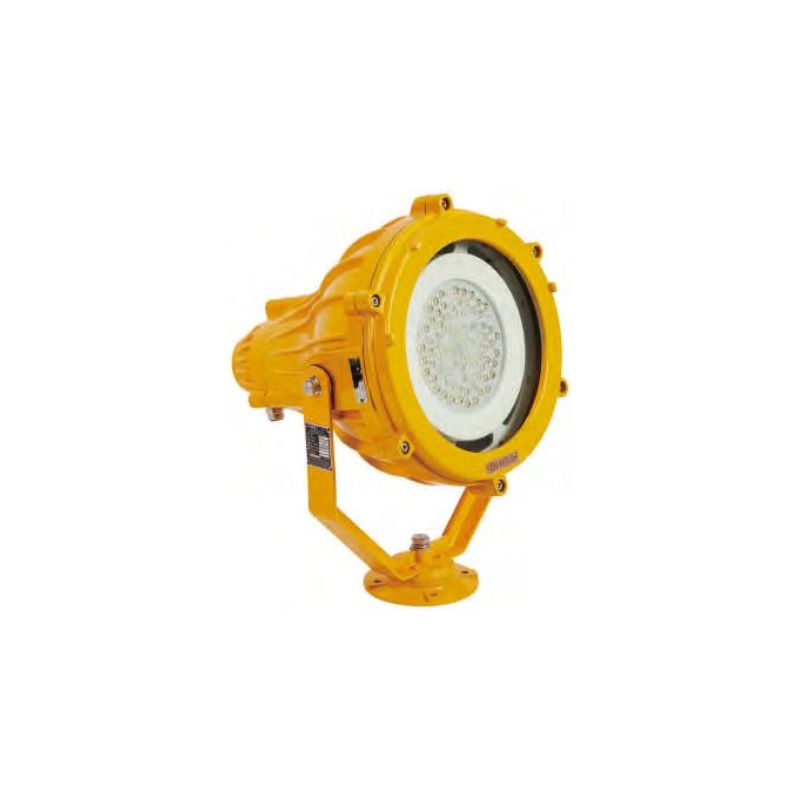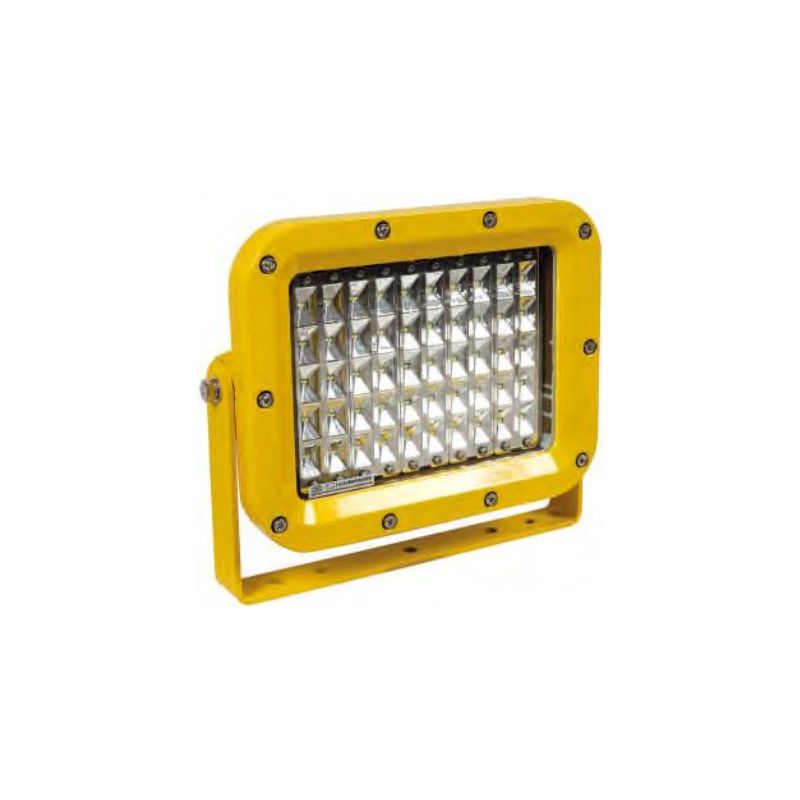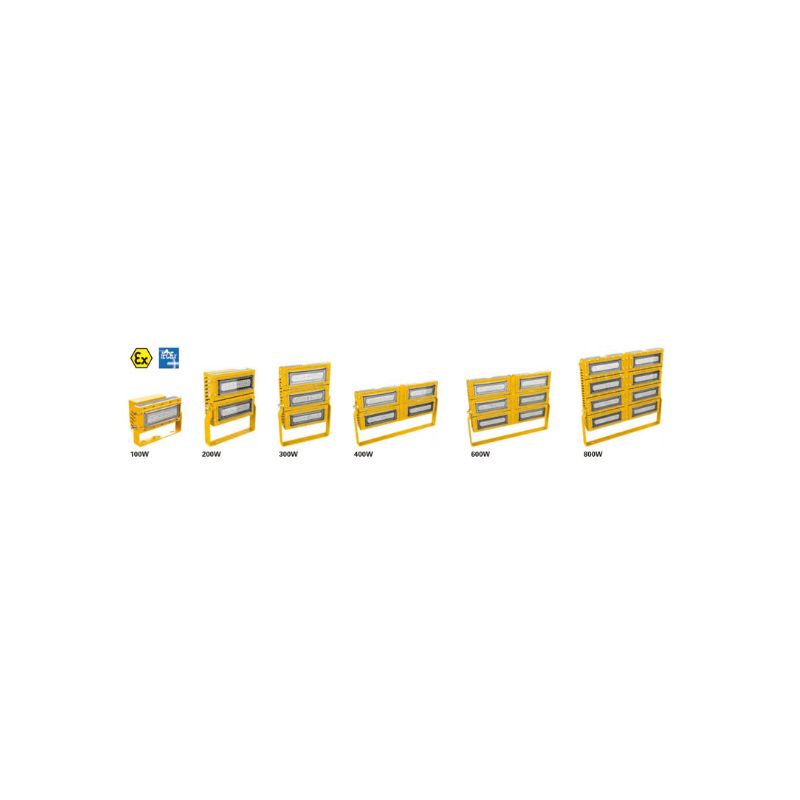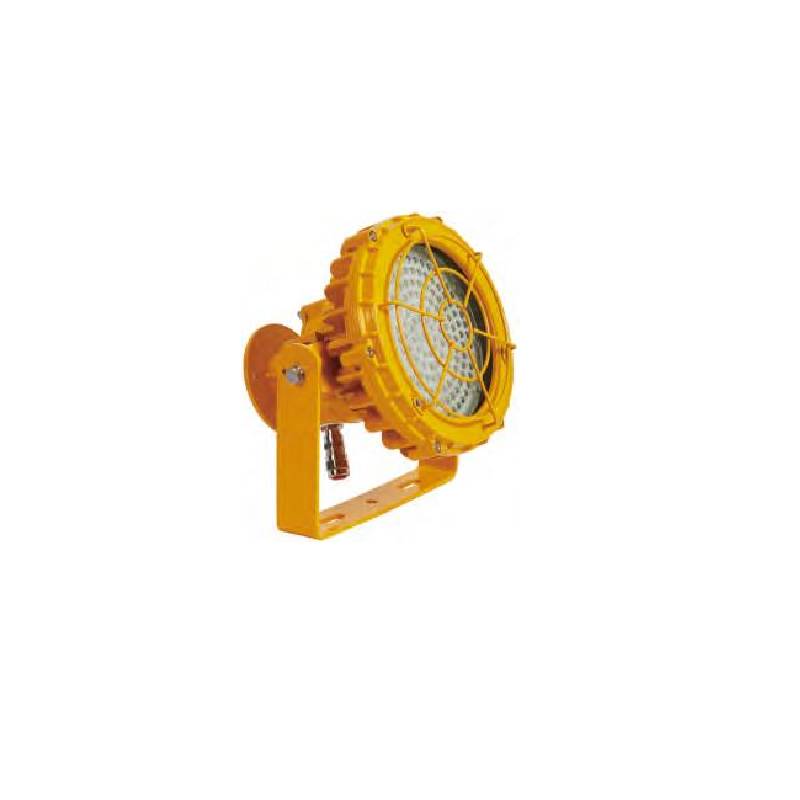Uncover the Principle of Explosion Proof Flood Light
Table of Contents
Explosion proof flood lights are crucial safety equipment designed for areas where explosive atmospheres may exist due to flammable gases, vapors, or dust. These lights are engineered to prevent ignition sources that could lead to catastrophic explosions, ensuring the safety of personnel and equipment in high-risk zones. Discover how these lights protect your industrial operations and enhance safety standards. Contact us now to discuss how explosion-proof flood lights can be integrated into your safety strategy.
The Science Behind Explosion Proof Flood Light
Explosion proof flood lights are designed with a specific set of principles to ensure safety in environments where explosive gases, vapors, or dust may be present. Here’s a detailed look at how these lights work to maintain safety:
Encapsulation and Isolation: Preventing Spark and Heat Exposure
Encapsulation is the primary method used in explosion-proof flood lights to prevent sparks and heat from coming into contact with explosive atmospheres. The lighting is built with a robust, sealed enclosure that acts as a barrier between the internal electrical components and the hazardous external environment. This enclosure is designed to be airtight, preventing the entry of gases, vapors, or dust that could ignite if they come into contact with an ignition source. The sealing also ensures that any sparks generated within the light fixture are contained, eliminating the risk of igniting the surrounding atmosphere.
Pressure Relief: Managing Internal Explosions
In the unlikely event of an internal explosion, explosion-proof flood lights are equipped with pressure relief systems. These systems are designed to manage the release of pressure and gases that result from an explosion, preventing the fixture from rupturing and containing the explosion within the light itself. This feature is crucial as it stops the explosion from propagating to the surrounding environment, which could lead to a larger, more catastrophic explosion. The pressure relief devices are carefully designed to burst pressure, allowing the gases to escape safely.
Cooling Mechanisms: Maintaining Safe Operating Temperatures
To further enhance safety, explosion-proof flood lights incorporate cooling mechanisms. These mechanisms are essential because excessive heat can be as dangerous as a spark in an explosive atmosphere. The cooling systems work by dissipating heat away from the light’s surface, keeping the temperature below the ignition point of any potential flammable substances. This is often accomplished through heat sinks, thermal management materials, and even forced air cooling in some designs, ensuring the lighting always operates within a safe temperature range.
Materials and Corrosion Resistance: Withstanding Harsh Environments
The materials used in explosion proof floodlights are selected for their ability to withstand the corrosive effects of salt water, chemicals, and other environmental factors common in hazardous areas. Corrosion resistance is critical as it ensures the long-term integrity and effectiveness of the light fixture. Materials such as stainless steel, aluminum alloys, and special coatings are used to protect the light fixture from the elements. In addition, seals and gaskets made of materials such as silicone or fluororubber (FKM) are used to keep the light fixture sealed and prevent the intrusion of moisture and corrosive materials.
In general, the working principle of explosion-proof floodlights is to create a safe lighting environment in hazardous places. Through encapsulation, pressure relief, cooling mechanisms and the use of corrosion-resistant materials, these lights provide necessary lighting without compromising safety.
Application Scenarios for Explosion Proof Flood Light
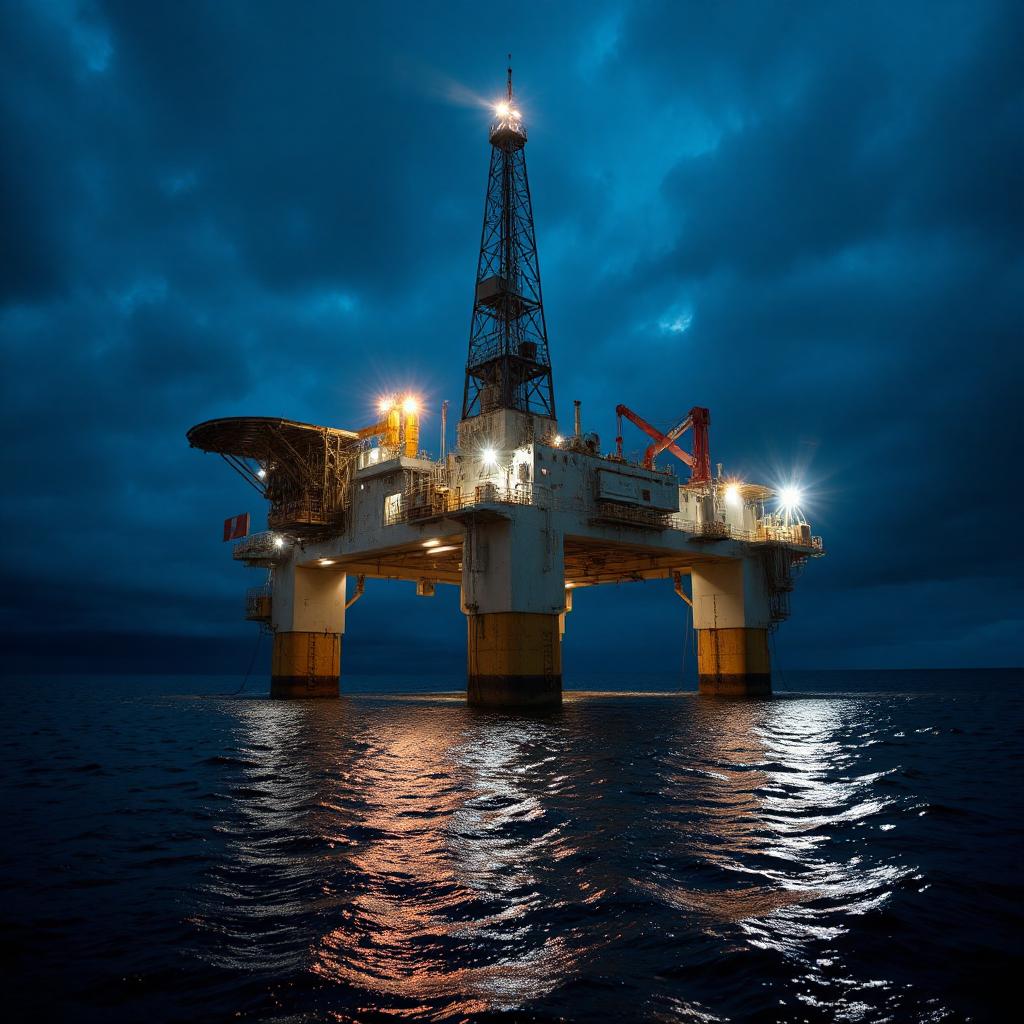
Offshore Oil Rigs & Platforms
These environments are prone to gas leaks and have equipment that can generate sparks. Explosion-proof flood lights ensure that illumination does not become a source of ignition.
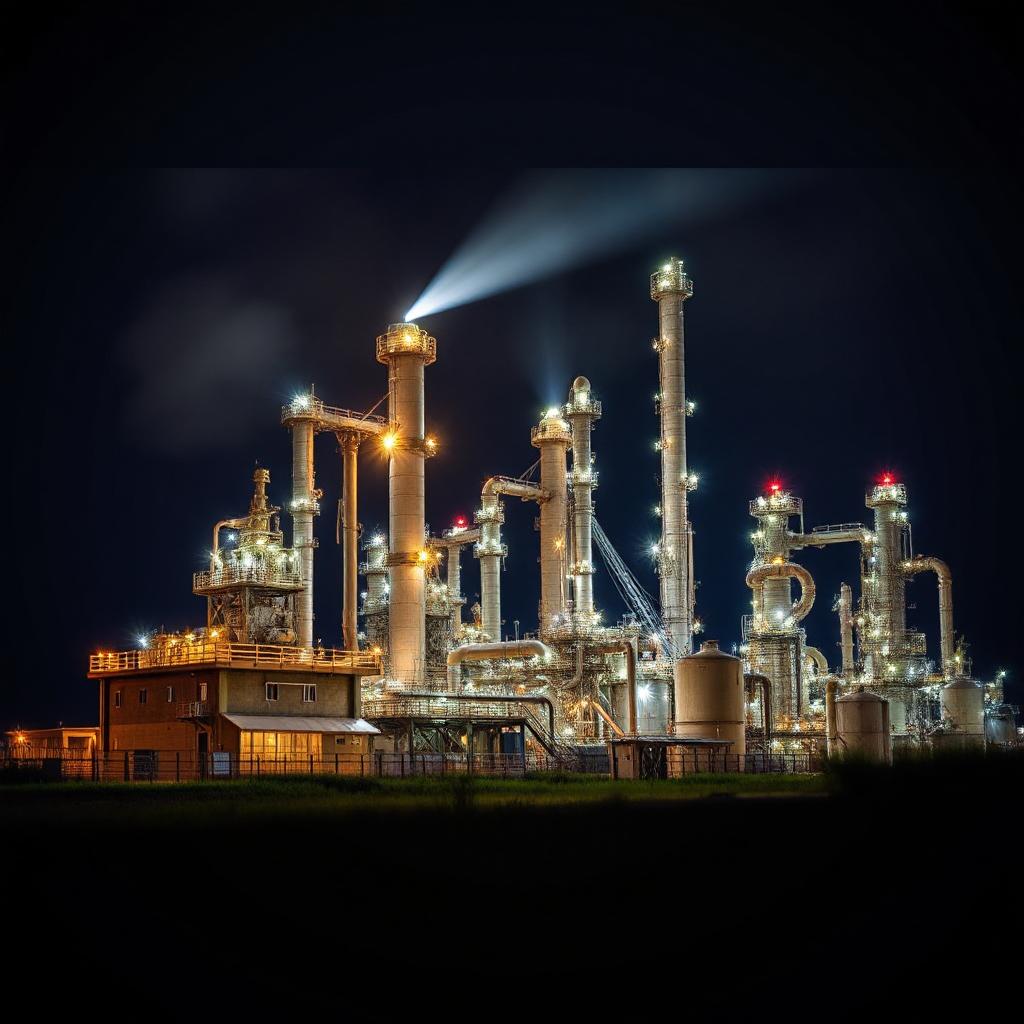
Chemical Plants & Refineries
Chemical plants often handle volatile substances that can create explosive atmospheres. These lights are crucial for safe operation and maintenance work.
Mines & Quarries
Dust from mining activities can be explosive, and the rugged environment demands durable lighting solutions.
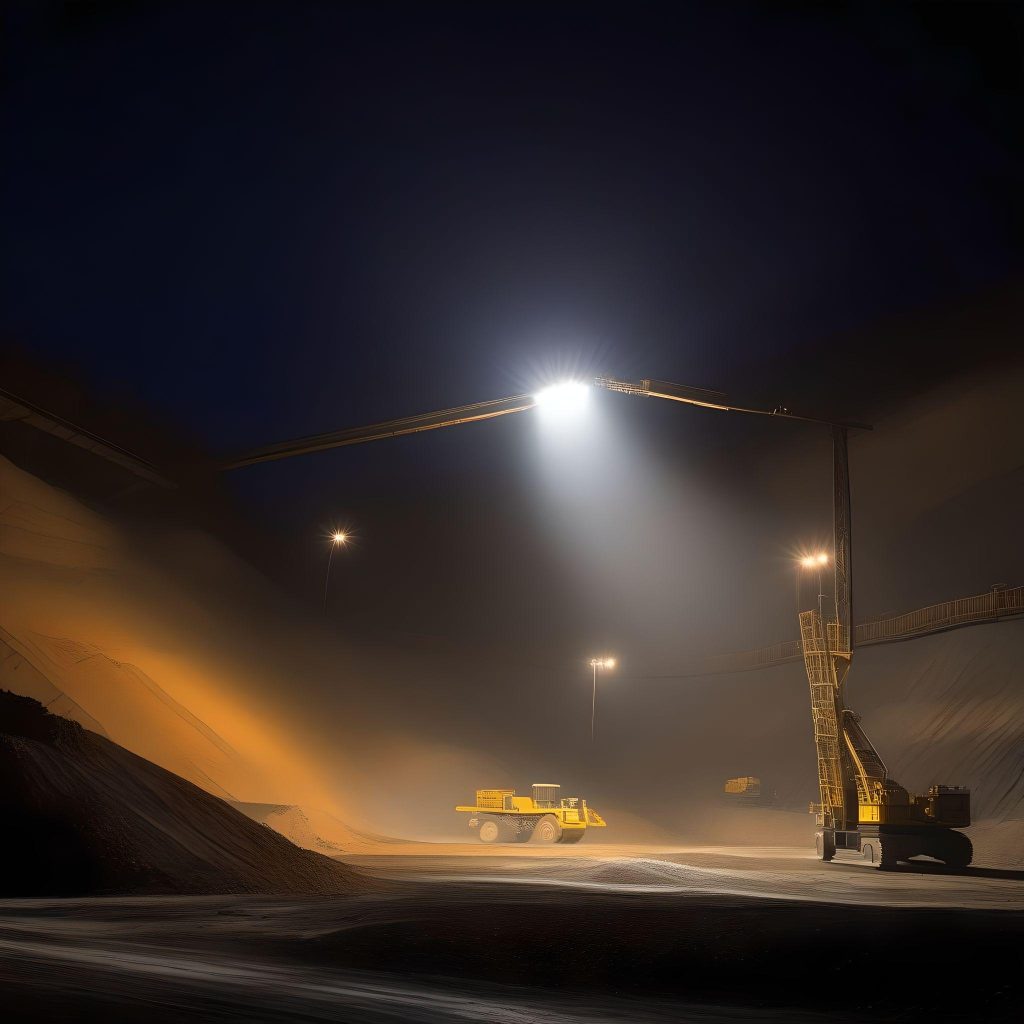
Warehouses & Storage Facilities
Storage facilities for flammable materials require explosion-proof lighting to prevent ignition from electrical faults or sparks.
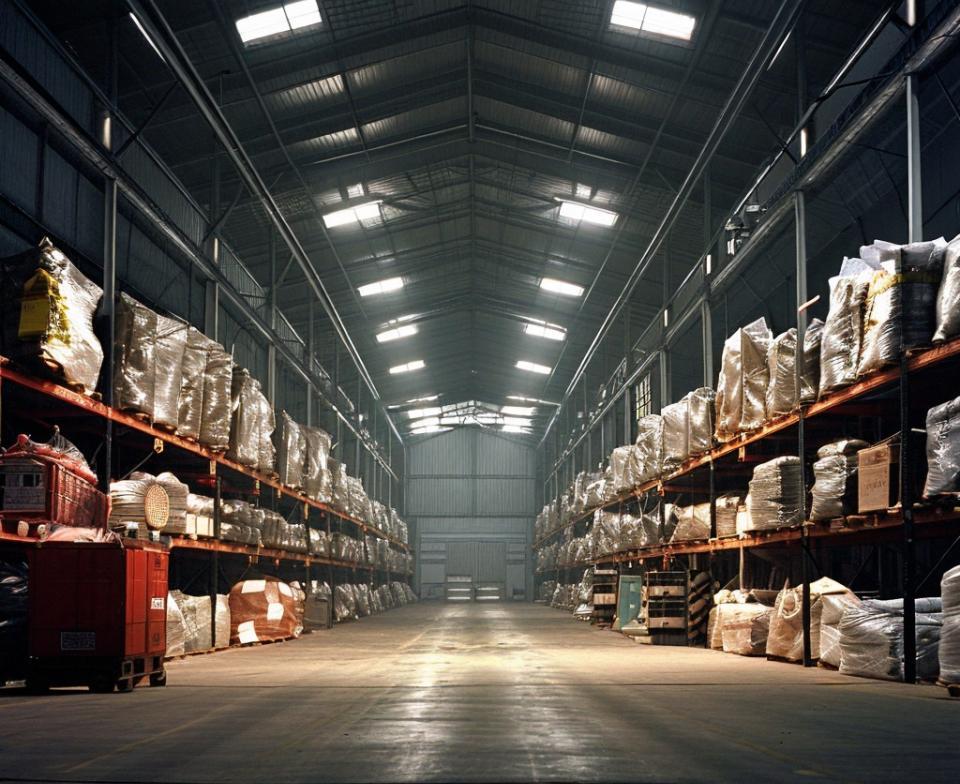
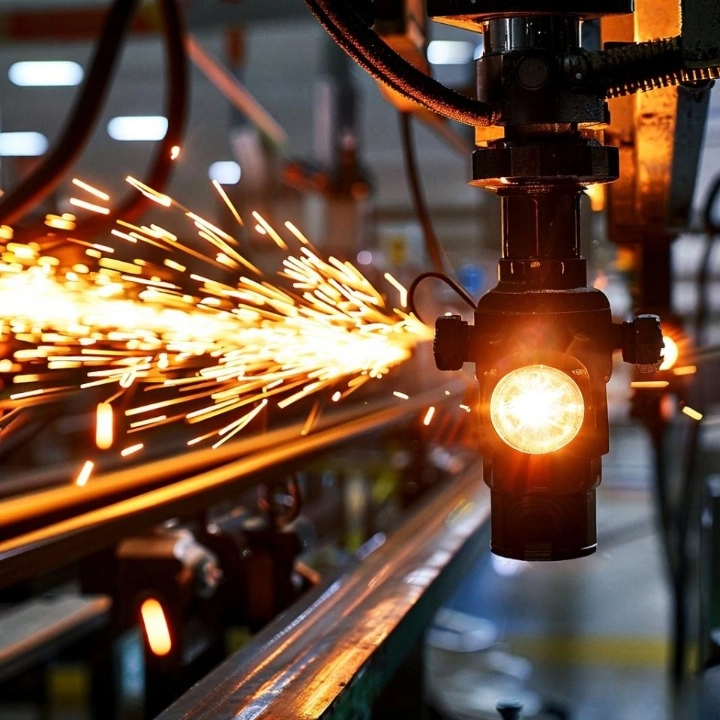
Manufacturing Plants
Many manufacturing processes involve flammable materials or create dust, making explosion-proof lighting a necessity for safety.
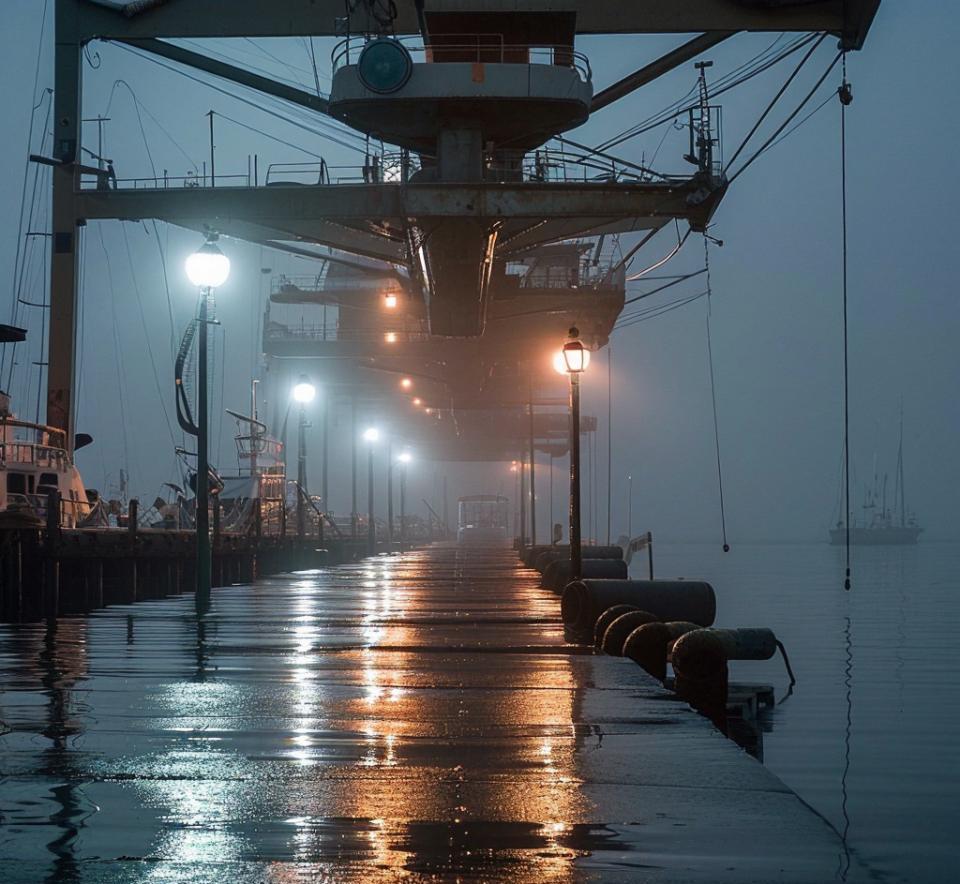
Maritime & Dockyards
Docks and ships often handle fuel and other flammable substances, requiring lighting that won’t spark an explosion.
Why Use Explosion Proof Flood Light
The primary reason for using explosion-proof flood lights is to prevent explosions in environments where flammable substances are present. These lights:
- Prevent Ignition: By containing all electrical components and preventing sparks or heat from escaping, they minimize the risk of ignition.
- Comply with Regulations: They meet international safety standards set by organizations like the International Maritime Organization (IMO) and the American National Standards Institute (ANSI), which require explosion-proof equipment in certain areas.
- Enhance Visibility: They provide bright, even lighting that improves visibility during operations, inspections, and emergencies.
- Ensure Continuity: In the event of power failures, explosion-proof emergency lighting ensures that critical areas remain illuminated, facilitating safe evacuations and operations.
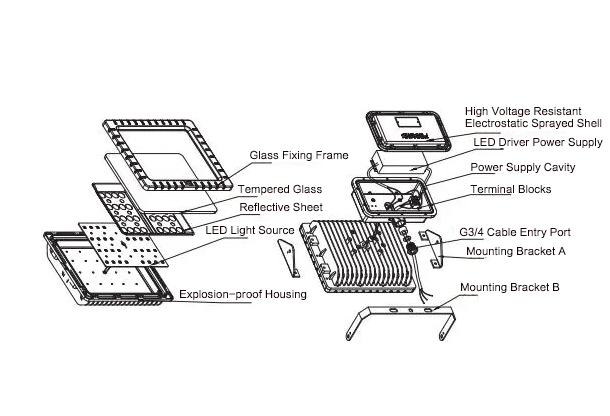
Classifications of Explosion Proof Flood Light
Explosion-proof flood lights are categorized based on various factors such as their application, mounting type, energy efficiency, and specific industry standards they comply with. Here’s a detailed classification:
By Mounting Type
- Fixed: These are permanently mounted and are the most common type used in industrial settings.
- Portable: Designed to be moved around as needed, often used for temporary lighting in hazardous areas.
- Recessed: Installed into the ceiling or walls, providing a seamless and unobtrusive lighting solution.
- Surface Mounted: Attached directly to the surface, often used in areas where ceiling mounting is not possible.
By Energy Efficiency
- LED: LED explosion-proof flood lights are known for their energy efficiency, long life, and low heat generation.
- HID (High-Intensity Discharge): These lights provide a high level of illumination but are less energy-efficient compared to LED.
- CFL (Compact Fluorescent Lamp): A more energy-efficient alternative to traditional incandescent lights but less common in explosion-proof designs due to their fragility.
By Compliance Standards
- ATEX: Certified for use in explosive atmospheres as per the ATEX directive in Europe.
- IECEx: Complies with the international Electrotechnical Commission’s standards for explosive atmospheres.
- Class I, II, III Divisions: Classified according to the US National Electrical Code (NEC) based on the type of hazardous material present.
| NEC Division System Gas & Dust Groups | ||
| Area | Group | Representative Materials |
| Class I, Division 1 &2 | A | Acetylene |
| B | Hydrogen | |
| C | Ethylene | |
| D | Propane | |
| Class II, Division 1 &2 | E (Division 1 only) | Metal dusts, such as magnesium (Division 1 only) |
| F | Carbonaceous dusts, such as carbon & charcoal | |
| G | Non-conductive dusts such as flour, grain, wood & plastic | |
| Class III, Division 1 &2 | None | Combustible fibers/flying, such as lint, cotton wool & rayon |
By Environmental Resistance
- Waterproof: Designed to resist water ingress, suitable for outdoor use or in areas prone to water splashes.
- Dustproof: Built to prevent dust from entering the light fixture, important in dusty industrial environments.
- Corrosion-Resistant: Made with materials that can withstand the effects of corrosive substances, common in chemical plants and coastal areas.
By Light Distribution
- Flood: Provides wide coverage with a soft, even spread of light, ideal for large areas.
- Spot: Offers a concentrated beam of light, useful for highlighting specific areas or objects.
- Wide Flood: A combination of flood and spot, offering a wider spread than a spot light but more focused than a standard flood light.
Each classification serves a specific purpose and is tailored to the unique requirements of different hazardous environments. When selecting explosion-proof flood lights, it’s crucial to consider the specific hazards present in your environment and choose the lights that best meet those needs.
Explosion-proof flood lights are a vital component of safety strategies in hazardous environments. Their principles, applications, and classifications underscore the importance of selecting the right lighting solutions tailored to the specific hazards of your environment. As technology continues to advance, these lights will Further raising safety standards across various industries. At Yushuo, we are committed to keeping pace with the progress of the times and the industry, providing our users with more comprehensive and safer explosion-proof flood lights. If you’re looking to enhance the safety of your operations or navigation with explosion-proof flood lights, feel free to reach out to us at any time. We are here to assist you in making informed choices that prioritize safety and compliance.
